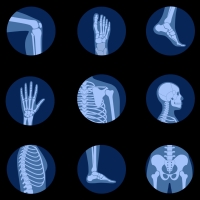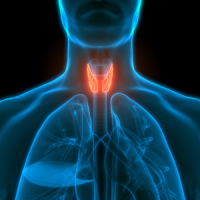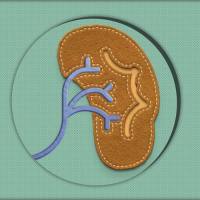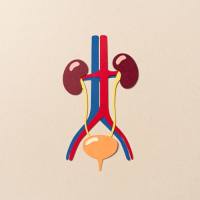双语学习(帕罗西汀)
英文名称:Paroxetine
中文别名:氟苯哌苯醚、帕罗克赛
英文别名:Paroxetine Hydrochloride、Paroxil、Paxil、Seroxst
【药理】
本品能选择性抑制突触前膜对 5-HT的再摄取,导致突触间隙 5-HT积聚,从而增强5-HT传递效能。抑制 NE的再摄取能力则小得多,对多巴胺、组胺受体不敏感,仅对 M受体有很弱的亲和力。经长期用药发现,帕罗西汀可引起神经末梢5-HT自身受体反应性下降,迄今还不清楚5-HT受体敏感性下降是否与其抗抑郁作用有关。经脑电图显示,服用帕罗西汀并不引起镇静作用,但临床使用可明显改善睡眠。不论顿服或分次服,均不影响人的精神运动操作,也不加强氟哌啶醇、异戊巴比妥、奥沙西泮或乙醇效果。
药动学
有首过效应,给药后仅 1%存在于体循环中,血浆蛋白结合率为 93%。口服 30mg,达峰时间为 5h( 0.5~11h),达峰浓度为0.8~65ng/ml,连服 7~14日达稳态血药浓度,通过氧化进行代谢,先氧化成儿茶酚中间产物,然后在间位甲基化,最后生成尿苷酸化合物从尿液排出,小部分通过胆汁从粪便排出。健康志愿者消除半减期为 24h,老年人半减期延长。肾功能不全者达峰浓度升高,AUC增高,半减期也延长。
【适应症】
本品的抗抑郁作用已被几项安慰剂对照试验所确认,在对重症抑郁患者的治疗中,其疗效与阿米替林,丙咪嗪、马普替林、米安色林等药相当,但副作用小,尤其是抗胆碱能副作用小,由此退出试验的比率小。有效率在 50%~70%,因此,该药是对现有抗抑郁药物的有益补充。
【用法用量】
一般20mg/天,早餐时顿服.2-3周后,根据反应,可以10mg量递增.最大可达50mg/天,老人不超过40mg/天.停药应逐渐减量,不可骤停.不推荐儿童使用.肝肾功能受损者(肌酐清除率<30ml/分)服药后血药浓度较一般为高,推荐剂量20mg/天,如需加量,应限制在服药范围的低限.
[用法及用量]口服,每日 20~30mg,早晨 1次服。最高每日 50mg。老年人不宜超过 40mg,肝肾疾患者剂量宜减。
[剂型与规格]片剂:20mg/片,30m/片。
【禁用慎用】
不推荐儿童使用. 老年患者慎用,应减量。肝肾功能损害者禁用。
【不良反应】
可见轻度口干、恶心、厌食、便秘、头疼、震颤、乏力、失眠和性功能障碍.反应强度和频率随用药时间而降低,通常不影响治疗. 偶见神经性水肿、荨麻疹、体位性低血压和罕见锥体外系反应的报道. 肝功能异常、低钠血症较少见,通常停药后迅速恢复.也有报道迅速停药可引起综合症:睡眠障碍、激惹或焦虑、恶心、出汗、意识模糊.
与三环类抗抑郁药相比,抗胆碱能反应小而胃肠道反应稍大。如口干发生率为 7%,便秘为 4%。其他还有出汗(9%)、震颤(8%)、恶心(12%)等。
【适应症】
1.Paroxetine is in a class of drugs called selective serotonin reuptake inhibitors. Paroxetine affects chemicals in your brain that may become unbalanced and cause depression, panic or anxiety, or obsessive or compulsive symptoms.
2.Paroxetine is used to treat depression, obsessive-compulsive disorder, panic disorder, and social anxiety disorder (social phobia).
3.Paroxetine may also be used for purposes other than those listed in this medication guide.
【用法用量】
1.Take paroxetine exactly as directed by your doctor. If you do not understand these instructions, ask your pharmacist, nurse, or doctor to explain them to you.
2.Take each dose with water.
3.Swallow the controlled-release tablets (Paxil CR) whole, without crushing or chewing. They are specially formulated to release the medication slowly in your body.
4.Shake the suspension well before measuring a dose. To ensure that you get the correct dose, measure the suspension with a dose-measuring cup or spoon, not with a regular table spoon. If you do not have a dose-measuring device, ask your pharmacist for one.
5.Paroxetine may be taken with or without food.
6.Try to take paroxetine at the same time each day.
7.Do not stop taking paroxetine without first talking to your doctor. It may take 4 weeks or more for you to start feeling better and you may experience unpleasant side effects if you stop taking paroxetine suddenly.
8.Store paroxetine at room temperature away from moisture and heat.
【注意事项】
1.Do not stop taking paroxetine without first talking to your doctor. It may take 4 weeks or more for you to start feeling better and you may experience unpleasant side effects if you stop taking paroxetine suddenly.
If Miss a Dose: 1.Take the missed dose as soon as you remember. However, if it is almost time for your next regularly scheduled dose, skip the missed dose and take the next one as directed. Do not take a double dose of this medication unless otherwise directed by your doctor.
Contraindications: 1.Do not take paroxetine if you have taken a monoamine oxidase inhibitor (MAOI) such as isocarboxazid (Marplan), phenelzine (Nardil), or tranylcypromine (Parnate) during the last 2 weeks. Serious, and sometimes fatal, reactions have occurred when these medicines have been used together. Also, do not take paroxetine if you are taking thioridazine (Mellaril). Dangerous, even fatal irregular heartbeats may occur if these medicines are taken together. You must wait 5 weeks after stopping paroxetine before taking thioridazine (Mellaril).
2.Before taking paroxetine, tell your doctor if you
*have liver disease,
*have kidney disease,
*suffer from seizures, or
*suffer from mania or have suicidal thoughts.
3.You may not be able to take paroxetine, or you may need a dosage adjustment or special monitoring during treatment if you have any of the conditions listed above.
4.Paroxetine is in the FDA pregnancy category C. This means that it is not known whether it will harm an unborn baby. Do not take paroxetine without first talking to your doctor if you are pregnant.
5.Paroxetine passes into breast milk and may affect a nursing baby. Do not take paroxetine without first talking to your doctor if you are breast-feeding a baby.
Special Concerns: 1.Use caution when driving, operating machinery, or performing other hazardous activities. Paroxetine may cause dizziness or drowsiness. If you experience dizziness or drowsiness, avoid these activities.
2.Use alcohol cautiously. Alcohol may increase drowsiness or dizziness while you are taking paroxetine.
【不良反应】
1.If you experience any of the following serious side effects, stop taking paroxetine and call your doctor immediately or seek emergency medical treatment:
*an allergic reaction (difficulty breathing; closing of your throat; swelling of your lips, tongue, or face; or hives);
*an irregular heartbeat or pulse;
*low blood pressure (dizziness, weakness);
*high blood pressure (severe headache, blurred vision);
*unusual bleeding or bruising; or
*fever or chills.
2.Less serious side effects may be more likely to occur. Continue to take paroxetine and talk to your doctor if you experience
*headache;
*tremor, nervousness, or anxiety;
*nausea, diarrhea, dry mouth, or changes in appetite or weight;
*sleepiness or insomnia; or
*decreased sex drive, impotence, or difficulty having an orgasm.
3.Side effects other than those listed here may also occur. Talk to your doctor about any side effect that seems unusual or that is especially bothersome.
【相互作用】
1.Do not take paroxetine if you have taken a monoamine oxidase inhibitor (MAOI) such as isocarboxazid (Marplan), phenelzine (Nardil), or tranylcypromine (Parnate) during the last 2 weeks. Serious, and sometimes fatal, reactions have occurred when these medicines have been used together. Also, do not take paroxetine if you are taking thioridazine (Mellaril). Dangerous, even fatal irregular heartbeats may occur if these medicines are taken together. You must wait 5 weeks after stopping paroxetine before taking thioridazine (Mellaril).
2.Before taking paroxetine, tell your doctor if you are taking any of the following medicines:
*a benzodiazepine including diazepam (Valium), alprazolam (Xanax), chlordiazepoxide (Librium), clorazepate (Tranxene), temazepam (Restoril), triazolam (Halcion), and others;
*a tricyclic antidepressant including amitriptyline (Elavil), imipramine (Tofranil), doxepin (Sinequan), nortriptyline (Pamelor), and others;
*a phenothiazine including chlorpromazine (Thorazine), fluphenazine (Prolixin), mesoridazine (Serentil), perphenazine (Trilafon), prochlorperazine (Compazine), and others;
*sumatriptan (Imitrex), naratriptan (Amerge), rizatriptan (Maxalt), or zolmitriptan (Zomig);
*carbamazepine (Tegretol) or phenytoin (Dilantin);
*lithium (Lithobid, Eskalith, others);
*theophylline (Theobid, Theolair, Theochron, Elixophyllin, and others);
*warfarin (Coumadin);
*digoxin (Lanoxin); or
*cimetidine (Tagamet, Tagamet HB).
3.You may not be able to take paroxetine, or you may require a dosage adjustment or special monitoring during treatment if you are taking any of the medicines listed above.
4.Drugs other than those listed here may also interact with paroxetine. Talk to your doctor and pharmacist before taking any prescription or over-the-counter medicines.
【药物过量】
1.Seek emergency medical attention.
2.Symptoms of a paroxetine overdose include nausea, vomiting, tremor, seizures, agitation, drowsiness, hyperactivity, and enlarged pupils.















































